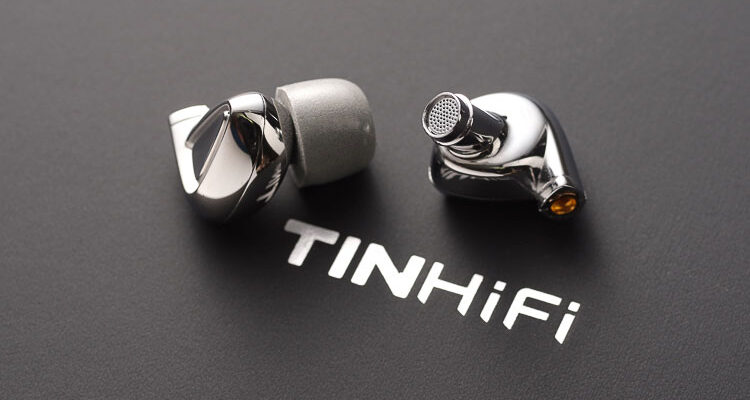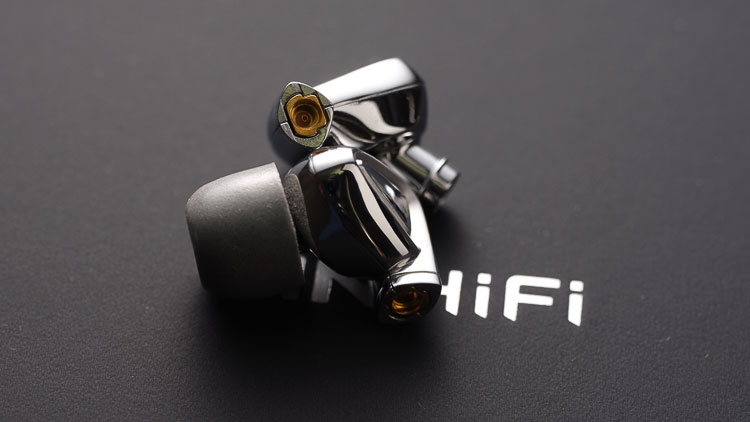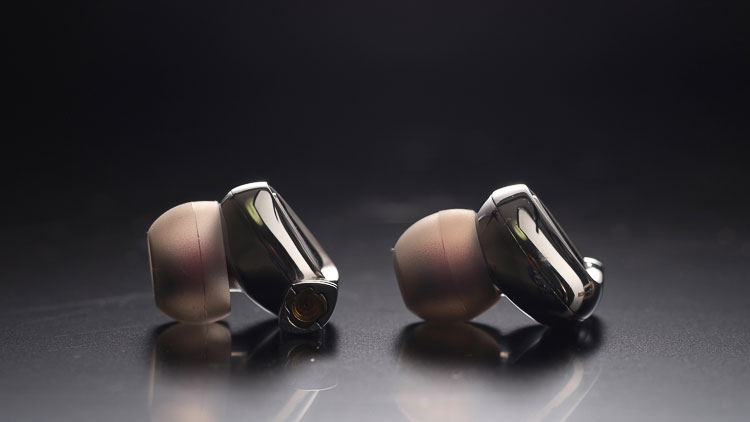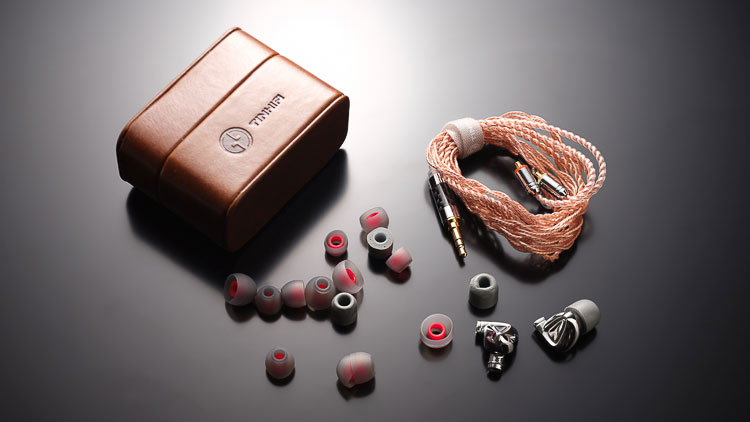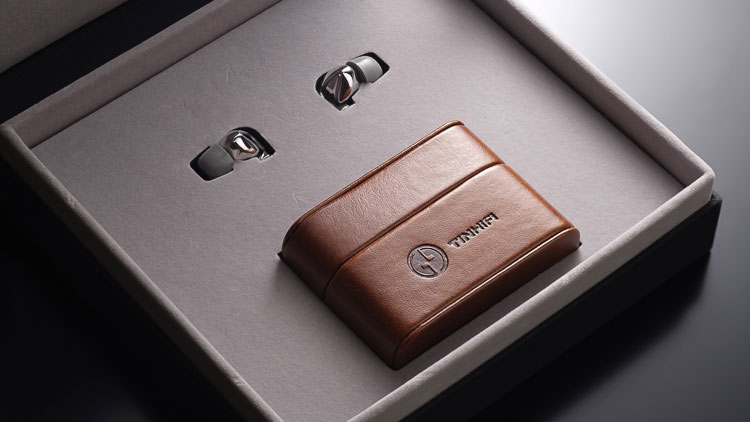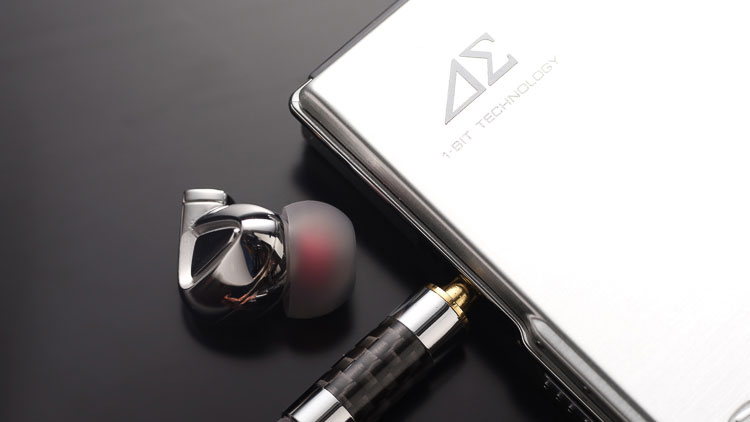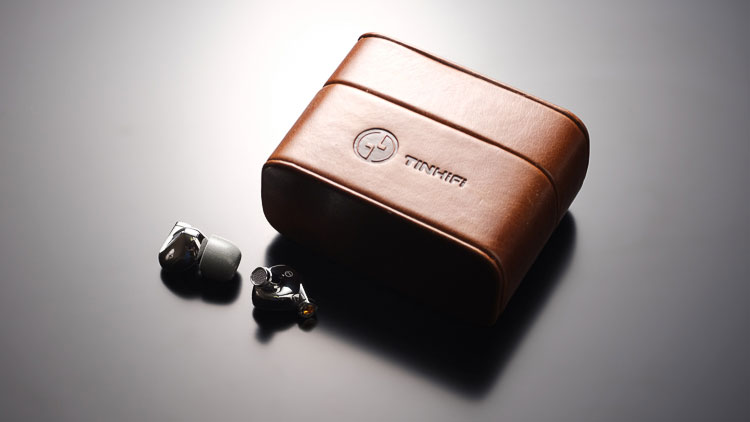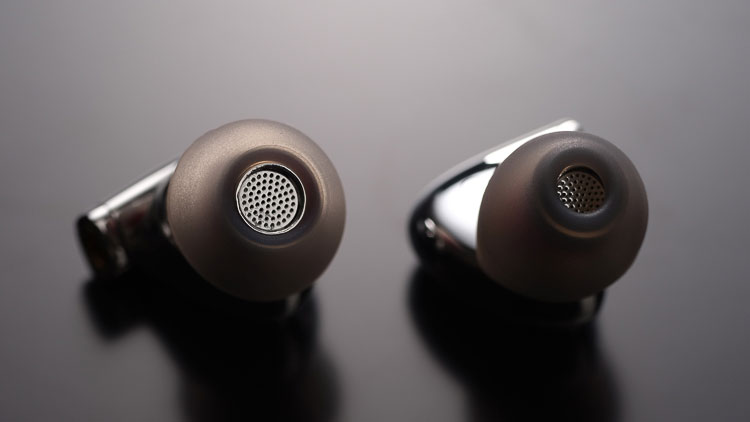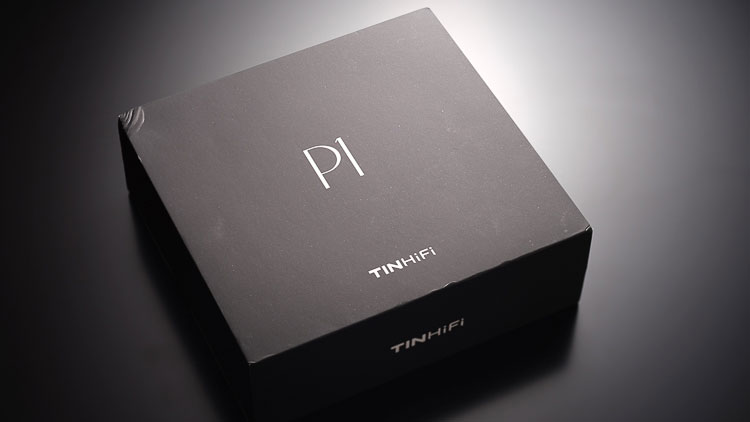The TinHiFi P1 is the company’s first-ever planar magnetic universal monitor featuring a 10-millimeter planar magnetic driver and ultra-nano diaphragm technology. It is priced at $169.
Disclaimer: Linsoul sent the Tin HiFi P1 to me for the purposes of a review here at Headfonics. We thank Linsoul and Tin HiFi for this opportunity.
To read more about our reviews of Tin Hifi products on Headfonics click here.
Note, this 2-page review follows our new scoring guidelines for 2020 which you can read up on here.
Tin HiFi’s penchant for nailing sound signatures now extends to the dark and rich. And what richness is shown in the P1. Of course, I don’t want to jump the gun. We have a bit more to talk about. And I’d like to let the P1 do the talking.
Build quality
Prior to opening the P1’s spec page, I had never heard of food-grade 304 stainless steel. I’m still not sure about much but that it probably tastes better than regular steel. (But then again, I don’t eat metal, so… I’ll let one of you inform me later.)
I also know that the P1 is solid. Its two halves clasp perfectly in a nearly seamless joint. Vents are located at the bottom inside leg of the sound tube, and at the tippest part of the forward chevron along the face.
These help the P1 breathe in a lot and get good to excellent bass response. They also let in a bit of environment in and a bit of your music out into the world.
The MMCX ports are fastened internally and held into place by the P1’s solid, thick steel walls. Unless the internals are a bit wonk, I reckon that the P1 will keep fast its MMCX clips longer and firmer than most earphones on the market.
You’ll also note that the P1, while not perfectly free of final finish blemishes, is clean, prettily polished, and shows finely machined corners, grills, and seams. I can’t believe that this earphone is 169$.
Comfort & Fit
Shaped to Fit
It also fits and looks pretty damn cool. Like, instead of sporting the now-common design-less custom-cum-universal (CCU) chassis, it has a look, and feel, all it’s own. Actually, it’s got something of a Beyerdynamic Xelento thing going on. The entire earphone cants forward and is thicker at the front than at the rear. This ensures that it both lays and stays flat between the meaty bits of your ear.
This presents ample purchase for inserting and removing the P1 from the ear. It rear-tapered design keeps it flush with the ear without also forcing itself outward or thrusting out your ears’ meatiest bits.
In other words, it is comfy. Now, if you’re an Asian female (or even an Asian male), it is likely that the valley between that meat isn’t hugely spacious. If that’s the case, the P1 may rub one side or the other. It’s not at all big, but I see a lot of cramped ears over here. Also, the P1 is neither sharp nor edgy; even if it rubs your ears, it won’t be painful.
Nozzle
The P1’s sound tube is long and straight and; viewed straight on, it drives into the ear perpendicularly to the faceplate. I really wish, that, like the Ultrasone IQ, the sound tube gently thrust acutely upward into the ear.
Sadly, very few earphones have been designed with such anatomical correction. Looked on from above, it enters the ear at about 135º, which is probably a safe angle for some ears, but not the all. It should be tighter around the bend, which would also pitch it forward in tighter ears.
As it is, it is comfy, but mainly because it’s not big. If it were larger, its angles would make it something of a bugger to wear. With that angle, the earphone’s thick sound tube and the P1’s earpads are bound to bunch up in narrow canals. The shallow, wide-brimmed ones, also push down the stem a bit too far. This bears the grill to the swampy elements of your ear canal.
Cable & Connectors
While the above is somewhat unfortunate, it’s the P1’s cable that really grinds my gears. The MMCX portions run up high, kicking too much metal in front of the ear, and lop-siding the fit so that gaps form between the cable and the top of the ear. A well-designed cable and earphone might work in a gentle elbow joint to gently follow the curve of the ear.
Bravo to Tin HiFi for using low-profile heat shrink. It’s great for glasses wearers. Of course, Tin’s marble-like neck cinch also made it in. It’s a bit of a letdown. It is ugly, thick, and doesn’t match the cable’s aesthetics. It also tends to fall down whilst walking. The y-split, on the other hand, does its job. It sports the Tin HiFi logo, and never gets in the way. Too bad it lacks any sort of stress relief. The 3,5mm plug comes wrapped Tin’s iconic carbon fiber weave. The plug is straight and sports a conjoined and doubled-up heat-shrink protection sleeve.
This relief makes the cable, which is super pliable and nearly free of microphonic touch noise, feel a lot more secure. While its weave and general aesthetics are kind of cheap, everything about the cable works well. After the neck cinch, the cables are tightly wound and easy to handle. Prior to that, they are loose and ragged. Because the cable lacks energetic bits at all, the P1 is only barely microphonic.
Packaging & Accessories
This is the first Tin HiFi I’ve handled which come with a case. It’s the generic, fake leather sort you’ve seen in packages from myriad earphone makers around the globe. Imprinted along its face is Tin HiFi’s logo. Above that and buried under the pleather in the top lid is an invisible magnetic latch. This snaps the case closed with a schwaaaap! This schwaaaaper is padded and fits every accessory the P1 comes with.
By the way, the list of accessories that comes with the P1 reads like this: 8 ear tip pairs, two in foam, six in silicon. Half the silicon tips are shallow mushroom pieces with wide bores, the other half is the gumdrop-shaped, low-reaching sort that easily clears the sound tube.
Given the perfect ear, the mushroom pieces color sound the least, but also move more on the stem than any other piece and may slip down the sound tube. Despite mentioning it above, I’ll reiterate it here: if this happens, the grill nearly pops out of them and touches the skin of your inner ear.
Sound Impressions
Tonality
The P1 is dark and rich. In the comfy-chair sense, it is engaging. It is also remarkably free of smear, bloom, and boom in any frequency. Despite the good high-frequency extension, it isn’t an earphone for the treble head. This is a marked departure from the T2/Pro/T3. In fact, if the T2 Pro is so treble-tipped that it turns everything sibilant, and the T3, while perfectly free of sibilance, is such a treble head earphone that I had to quit the soy just whilst evaluating it.
Paired with tips that don’t occlude its grill it the P1 is neutrally bright with good gradient falls off to the side, a mildly deep Z-axis, a bulbous and vignetted 3D soundscape, and rich bass.
Is it as rich as the Hidizs MS4? No. And its mids aren’t quite as forward nor is its bass as powerful as Hidizs’s masterpiece. But it definitely falls in line, and with a greater pause at every juncture. Will it take the bass-heavy route? Never. Will it take the treble soft route? Never. Will it go crazy deep in the 3D soundscape? Never.
Will it do all of those things with a level of prudence that even the MS4 can’t match? You betcha.
Staging
Any of the T2 models presents a superficially wider-thrown stage than the P1, in a flat, wall of sound, sort of way. Ditto the T3. Hidizs’s MS1 casts things wider still. So does the DM7.
The closest thing to the P1 I’ve tried here is the DM6. But, where the DM6 gets strangely peaky in the highs and ignores some of the most poignant of mids, the P1 is even Stephen, plodding on with wide, focused mids and nary a dip or peak in the high mids and highs. This even pressure in all frequencies creates deep Z-axis soundscapes. Wow. 3D? Somewhat. But deep? You betcha.
Stereo Vignette
Another apparent thing is that, while not immediately contrasty or dynamic along the stereo X or Z axes, the P1’s stereo spread is wide and nuanced tanks to a finely graduated stereo vignette.
That vignette may be a tough one to overcome if your canals are narrow. If your canals pinch in the P1’s ear tips, lateral stereo cues may drop unnaturally fast along the X-axis. If your canals aren’t crazy narrow, you’ll find that details which slide in through the lateral vignette are well controlled and anchor non-bass elements to a strong, even center.
Yes, details do glide out to the shoulders. But they aren’t the IMAX image you’ll get with more energetic earphones. The Z-axis goes forward about a step at the sides, and about a step and half to two in the image center. It plays nicely with the X-axis vignette, and combined with a middling tall Y-axis, creates a cozy and veiled but wide soundstage with very little environmental feedback.
Teal deer (TL;DR): short of it is that the P1 casts a wide, heavily regulated stereo image. Think of it like this: you’re in your comfy chair in front of a glorious 2,1 channel sound system in a soundproofed room but that 2,1 stereo seems to come from speakers wider set than what’s in front of you. But what’s that? Bass that not only centrally anchors in front of you but hits the walls and then fades to black? And highs, too? What devilry is this?
Bass
There is so little to write about here that I don’t really know how to proceed. Do I say that, while sporting a minor lift in the low lows, the bass really is so at-the-ear-natural that it just slides right into the mids? That it never steps into or onto the lower midrange? That it doesn’t bloom at all? That it’s not got the greatest sense of dynamic stereo spread but shows good levels of texture and general lateral reach?
That, despite the most minor of lifts down low, the P1’s bass isn’t pressurized enough to render any yawning opening element to Marcus Schulz’s Mainstage? That, even at its peak, that pressure smoothly translates to high bass and lower mids? That it recovers instantly even under the furor of Russian speed trance? That it’s accent and reverb free- That… that… that… that.
And despite all that, it is rich and warm, and so well behaved that it both exists and doesn’t exist. Schrödinger’s bass.
The only thing I wish the P1 had in its nethers is a bit more stereo-borne texture on the underside of strings and percussion. It does the dry flutter damn well. Reeds it nails. But the crunchiest of sub-bass stereo cues are too smooth for my taste- and that only barely.
And that is my only complaint. Gosh, is this bass good. That’s not a question; it’s rhetorical because it is such good bass.
Mids & Highs
Would you know it? Mids and highs follow suite. It’s like listening to a perfect RMAA stereo measurement, wherein all three frequency bands, stereo detail is even Stephen at all volume levels across the board. Sure, this can make things complicated. Details primarily wrought in the mids don’t stick out as much as they do in a truly mid-centric earphone. Ditto the highs.
You could say that detail and pressure in all bands compete equally. This makes picking out certain frequency-anchored details a bit difficult. And yet, they are all there, and never confused. I said difficult, but not because those details don’t exist. They just don’t peak out, or over, any other detail. It’s all so natural.
Usually, I love chimes. I love reverberation; and, given the right prod, I love a bit of splash. The P1 renders chime echo almost inert. They ring. And they are gone. And, it’s not because of a strange frequency dive or forced roll-off. It’s just a natural, smooth gradient so fast-falling that it could be an automatic dimmer switch set right there, at the edge of chimes.
Guitars ring and then ring no more. The environment is sealed. The timbre is spot on.
If I didn’t listen to as much trance as I do, I’d probably say these frequency bands are perfect. Because I do, I miss splash. I miss minor environmental spill.
My Reference
That said, in the course of listening to the P1, I’ve had a much harder time going back to old favorite earphones. The P1 is just so calm and clean and reference without being wane or thin or boring. It’s not your Grandetymotic’s neutral.
I realize that I’m describing my reactions to listening more than I’m describing what I hear. Sorry. But I swear it’s like not listening to anything. It’s like being fed what I imagine to be a perfect take on the rich, and sometimes-dark neutral signal I was told that sometime in my 30s I’d fall in love with eventually but never did.
Until now.
Matchability
Efficiency
The P1 doesn’t hiss. I can plug it into an Aiwa AM-F70 or 80 and get only the slightest of hiss. That’s insane as that thing makes hiss almost as much as it makes music. If I also plug in a resistor cable, it’s all gone. And that’s a first. That thing hisses like the dickens. A lot of my favorite sounding portable and desktop music systems hiss; or, if they don’t hiss, are poorly able to control the high-current requirements of many excellent earphones. When driving the P1, each of them nails it with current, and/or hiss.
Hiss aside, Aiwa’s AM-F-series recorders are some of the best-sounding sources I’ve heard in my entire tenure as an audio nut. Their sound enhancement engine is soft-edged, nuanced, and endlessly listenable as it is simple. But, again, its hiss makes it nigh-on unlistenable.
It is also super powerful, which, thanks to the P1 being pretty insensitive, is really helpful. I have to set my iPhone about 2-3 steps above where normally I put it to get similar volume form the P1. Of course, there is plenty of juice left.
All of the above extends to the likes of the Lynx HILO, and even the Burson Play, both excellent headphone amps/DACs that hiss.
Select comparisons
Hidizs MS4
The MS4 has a wider and deeper midrange with more emotive vocals, but with bass whose output is comparably insane. While I love how the MS4 yawns details that most earphones can’t render, it is too much of a good thing when the overall sound signature is dark or deep. Where the MS4 gets mad, the P1’s flat vignette is perfectly graded in every frequency space, ensuring that neither lows nor highs overpower the mids.
If I had to pick one earphone for all of my music, I’d pick the P1. If I had to pick one earphone for vocals and live, I’d pick the MS4.
BGVP DM7
Okay, so the DM7 is v-shaped. But it’s v-shaped in a wide way that sort of dekes out the v. The P1 is darker, moodier, and far less capable of rendering recording atmospheres at the ear. Okay, they differ a lot. But, they are almost perfect complements, one being gentle with its v shape and exciting, the other being dead flat, reverb inert, and ready for the wind-down whilst also nearly perfectly keeping details even and taut in all frequencies. What a world.
If you value environment reverb, the DM7 delivers. If you value soft fades and an even flatter frequency response, the P1 is your ticket.
Flares 2 Pro
The 2 Pro is exciting, technically super-advanced, and expensive. But it does its elevated bass and highs with enough even temper to ensure that it never gets too hot or heavy. It’s smaller driver isn’t capable of outputting insane bass texture, but it wows in most areas. I really wish it had as beautiful stereo gradients as the P1, but I think that will remain a wish.
Thankfully the P1 can be used with excellent Bluetooth adapters like Sony’s MUCBT2, but it doesn’t as easily go balanced as the Flares does with any wireless adapter.
Performance
Considering how well the P1 is put together and how its tailored sound is sculpted for a specific user, its 169$ goes a long way- but really only for a certain person. That person is a late-30s guy known by himself as me. Early 30s Nathan far preferred the treble-tipped CK10 over about everything else. He wanted as much environmental information as possible. He wanted excitement up top plus one. Today he values the familiar, soft-edged takes on neutrality that positively describes the differences between an HD650 and a DT880.
Our Verdict
All things considered, the P1 is a remarkable earphone that brings planar sound to a greater. While I love the T2 and T3, the P1 so smoothly edges around my current preferences that going back is hard. I dislike its cable. I dislike its beck cinch and how it’s mounting flange barely holds in place its ear tips. But almost everything else about the P1 is great.
Of course, if you dislike planar sound signatures, the P1 won’t do it for you. But if you do… Well, let me introduce you to one of the great deals out there. Tim Hifi P1: you’re remarkable.
P1 Specifications
- Driver: 10 mm planar diaphragm
- Impedance: 20 Ω ± 15%
- Sensitivity: 96 ± 3 dB
- Frequency range: 10 Hz – 40 kHz
- Rated power: 5 mW
- Max power: 10 mW
- Max distortion: 1 dB
- Interface: Gold-plated MMCX connector
- Cable length: 1.2 m (3.9 inches)

